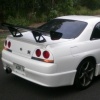Spigot Bush
Announcements
-
Similar Content
-
Latest Posts
-
I'll be sure not to put a full motor/transmission/subframe on it then! I've got a setup for that already so shouldn't have to use it for that.
-
The cam I am actually putting in (a few posts up) is actually smaller than my current one. At least duration/overlap wise. All the chop stuff I hear just sounds like an engine running badly, because it is. I then envision driving it around in 1st gear and being massively sad about it bucking to the beat of said chop. There is an idle video of someone with a similar cam floating around the internet, but mine is a custom cam (so is his) so it'll never be the same, plus the fact exhausts are entirely different. What I want to do is put some bullet mufflers/race mufflers in to replace a couple sections straight pipes that currently replace the two extra cats that I don't need. But this is even further down the line!




Recommended Posts
Create an account or sign in to comment
You need to be a member in order to leave a comment
Create an account
Sign up for a new account in our community. It's easy!
Register a new accountSign in
Already have an account? Sign in here.
Sign In Now